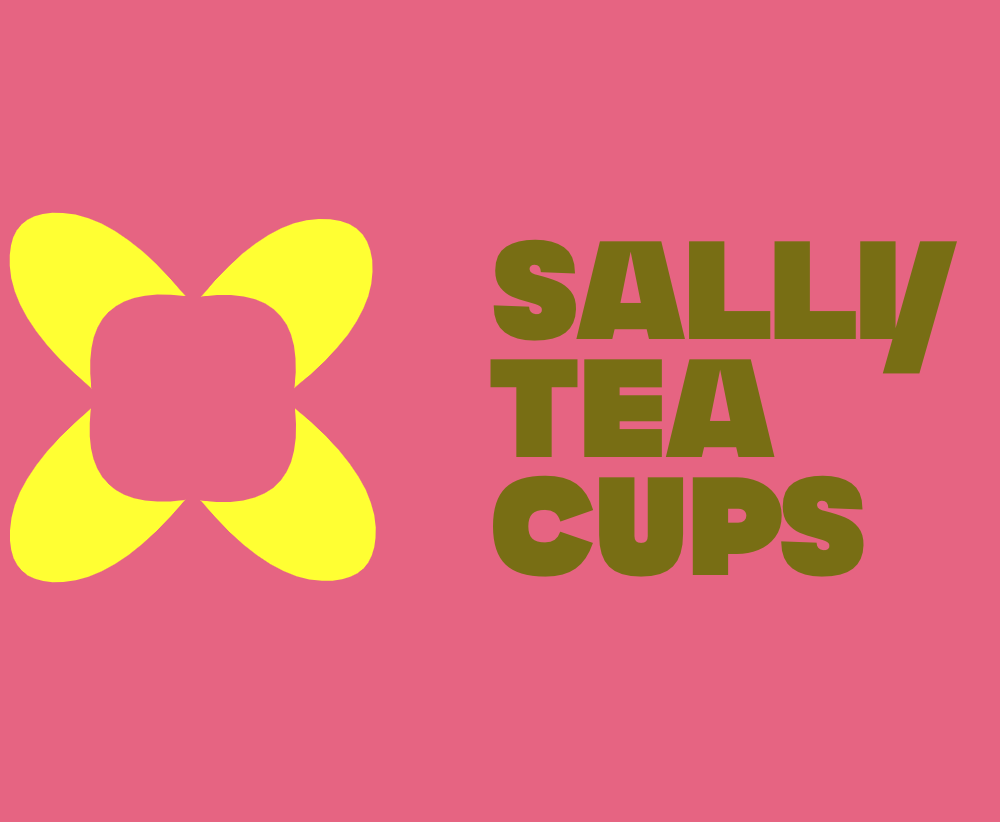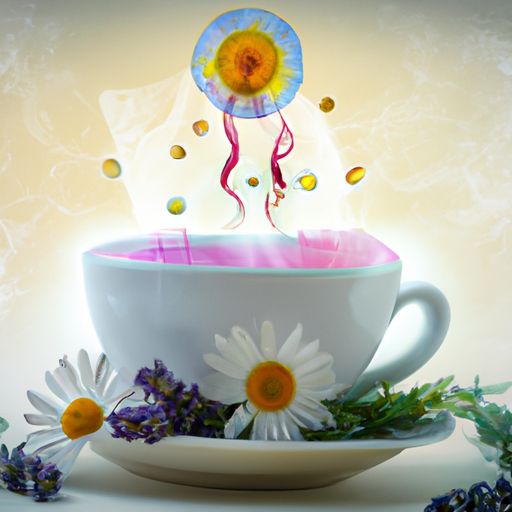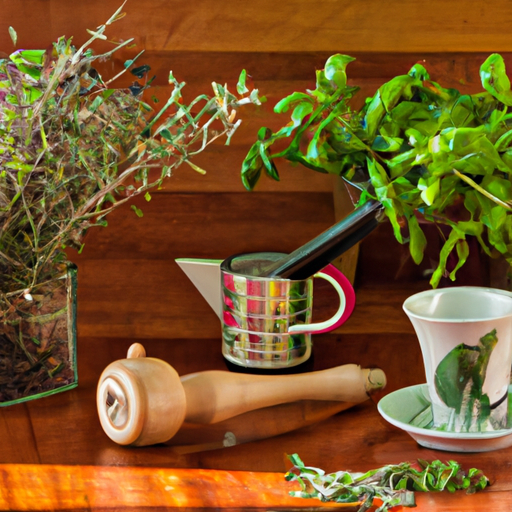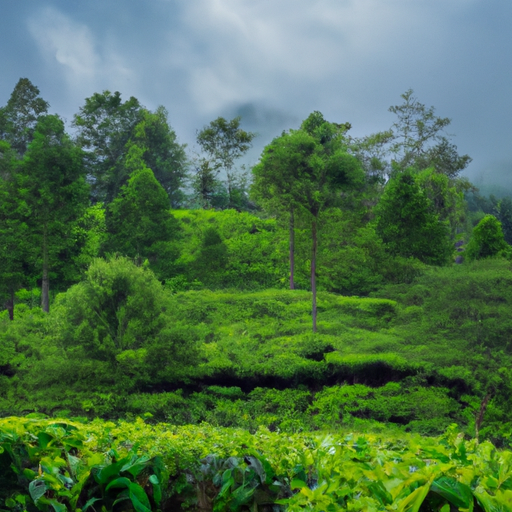Oolong Tea
What Type Of Tea Is Oolong
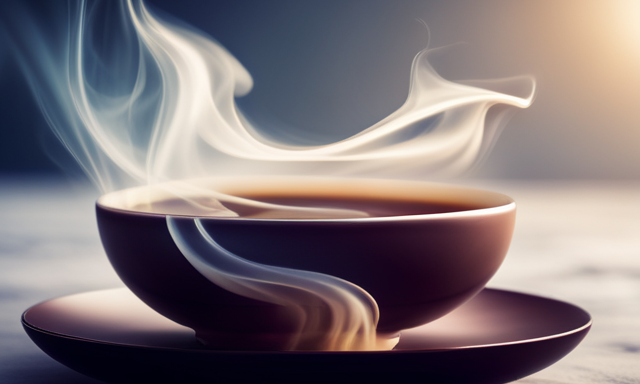
I’ve always been fascinated by the world of tea and the incredible variety it offers. Recently, I stumbled upon a tea that piqued my curiosity – oolong tea. What makes oolong tea so special? Well, let me tell you.
Oolong tea is a type of tea that falls somewhere between green and black tea. It undergoes a unique processing method that involves withering, oxidation, and firing, resulting in a tea with a complex flavor profile and delightful aroma.
From its origins in China to its popularity around the world, oolong tea has captivated tea enthusiasts with its distinctive taste and numerous health benefits.
In this article, we will explore the origins and processing of oolong tea, its flavor profile, health benefits, brewing techniques, and much more.
So sit back, relax, and get ready to discover the wonderful world of oolong tea.
Key Takeaways
- Oolong tea is highly revered and has cultural significance in China and Japan, inspiring art and literature.
- Tie Guan Yin is a traditional and delicate grade of oolong tea with a floral aroma and fruity flavor.
- Da Hong Pao is known as the ‘King of Tea’ and is grown in the Wuyi Mountains of China, offering a complex flavor profile with notes of honey, roasted nuts, and smokiness.
- Milk Oolong is a unique variety of oolong tea famous for its naturally creamy taste and aroma, carefully processed to achieve a distinct milky flavor.
The Origins and Processing of Oolong Tea
Oolong tea, with its rich and complex flavor, is a unique type of tea that originates from the Fujian and Guangdong provinces of China. The origins of oolong tea can be traced back to the Ming Dynasty, where it gained popularity among the Chinese nobility.
The processing of oolong tea involves a meticulous and intricate process that requires great skill and expertise. The leaves are plucked and withered under the sun, then partially oxidized before being fired to stop the oxidation process. This careful oxidation gives oolong tea its distinctive flavor and aroma.
The flavor profile of oolong tea can vary widely, ranging from floral and fruity to toasty and nutty. The next section will explore the different flavor profiles of oolong tea in more detail.
The Flavor Profile of Oolong Tea
Indulge in the alluring charm of this bewitching brew as you savor the delicate balance of flavors dancing upon your palate. Oolong tea, with its unique aroma and complex taste, is truly a captivating experience.
The aroma of oolong tea is a delicate blend of floral and fruity notes, which entices your senses from the moment it is brewed. As you take your first sip, you will be greeted with a subtle sweetness, followed by a hint of nuttiness and a slightly earthy undertone.
The brewing process for oolong tea is crucial in achieving this exceptional flavor profile. The leaves are partially oxidized, allowing them to retain the characteristics of both black and green teas. This meticulous process results in a tea that is neither too strong nor too light, but perfectly balanced.
Transitioning to the subsequent section about the health benefits of oolong tea, it is important to note that this enchanting brew offers more than just a delightful taste.
Health Benefits of Oolong Tea
Oolong tea offers a range of health benefits that can support overall well-being. One notable benefit is its ability to boost metabolism and aid in weight loss.
Additionally, it has been shown to support heart health and reduce the risk of chronic diseases.
These benefits make oolong tea a great addition to a healthy lifestyle.
Boosting metabolism and aiding in weight loss
Discover how drinking this delicious tea can help you shed those extra pounds and boost your metabolism, leaving you feeling energized and confident in your weight loss journey. Oolong tea is known for its ability to increase energy levels and improve digestion, making it an excellent choice for those looking to enhance their weight loss efforts.
Here are three ways oolong tea can support your weight loss goals:
-
Metabolism Boost: Oolong tea contains polyphenols that can increase metabolism and fat oxidation, helping you burn calories more efficiently.
-
Fat Breakdown: The antioxidants in oolong tea can stimulate enzymes that break down fat cells, aiding in weight loss.
-
Appetite Control: Oolong tea can help regulate blood sugar levels, reducing cravings and promoting feelings of fullness.
By incorporating oolong tea into your daily routine, you can support your weight loss journey while enjoying a delicious and refreshing beverage. Additionally, oolong tea has other health benefits, such as supporting heart health and reducing the risk of chronic diseases.
Supporting heart health and reducing the risk of chronic diseases
Improve your cardiovascular health and lower your risk of chronic diseases by incorporating this flavorful and invigorating beverage into your daily routine. Oolong tea offers numerous heart-healthy benefits and can help prevent chronic diseases.
Studies have shown that regularly consuming oolong tea can reduce the risk of heart disease and stroke by improving blood pressure and cholesterol levels. The antioxidants found in oolong tea help to reduce inflammation and oxidative stress in the body, which are key factors in the development of chronic diseases such as diabetes, cancer, and Alzheimer’s.
By enjoying a cup of oolong tea every day, you can support your heart health and reduce your risk of these debilitating conditions.
Now, let’s delve into the fascinating world of brewing techniques for oolong tea.
Brewing Techniques for Oolong Tea
To make a perfect cup of oolong tea, all you need is a little patience and a willingness to experiment with different brewing techniques. Here are three key factors to consider when brewing oolong tea:
-
Brewing temperature: Oolong tea is best brewed at a temperature between 180°F (82°C) and 205°F (96°C). This allows the tea leaves to slowly unfurl and release their complex flavors without becoming bitter.
-
Steeping time: The ideal steeping time for oolong tea is typically between 3 to 5 minutes. However, this can vary depending on personal preference and the specific type of oolong tea. Longer steeping times can result in a stronger flavor, while shorter steeping times can produce a milder taste.
-
Experimentation: Don’t be afraid to adjust the brewing temperature and steeping time to find your perfect cup of oolong tea. Different oolong teas have different characteristics, so feel free to experiment and discover which brewing technique brings out the flavors you enjoy the most.
Now, let’s move on to the next section and explore how to pair oolong tea with food.
Pairing Oolong Tea with Food
When it comes to pairing oolong tea with food, it’s all about finding the perfect balance.
For light and floral oolongs, I like to complement them with delicate dishes such as steamed fish or fresh salads.
On the other hand, dark and robust oolongs pair wonderfully with rich and savory foods like roasted meats or spicy stir-fries.
By understanding the characteristics of different oolongs, you can create harmonious flavor combinations that enhance both the tea and the food.
Complementing light and floral oolongs with delicate dishes
Try pairing light and floral oolongs with delicate dishes such as steamed fish or jasmine-infused rice; this combination enhances the flavors and creates a harmonious dining experience. Did you know that oolong tea accounts for approximately 2% of the world’s tea production?
To further entice your taste buds, here is a table that showcases the perfect pairings for light and floral oolongs:
| Oolong Tea Flavor | Ideal Food Pairing |
|---|---|
| Green floral | Steamed fish |
| Floral | Jasmine-infused rice |
| Lightly roasted | Sushi rolls |
As you can see, these delicate oolongs beautifully complement dishes that have subtle flavors, allowing the tea to shine through.
Moving on to the next section, we will explore how to balance dark and robust oolongs with rich and savory foods.
Balancing dark and robust oolongs with rich and savory foods
Indulge in the rich and savory flavors of dark and robust oolongs, perfectly balanced with dishes that will leave you craving for more.
When it comes to balancing oolong tea with spicy cuisine, the boldness of dark oolongs can hold their own against the heat. The complex flavors of these teas can complement the spiciness, creating a harmonious and satisfying experience.
Additionally, pairing oolong tea with cheese and charcuterie is a match made in culinary heaven. The earthy and slightly sweet notes of oolong tea beautifully contrast with the rich and savory flavors of cheese and cured meats, creating a delightful combination for the taste buds.
As we explore the cultural significance of oolong tea, we will uncover its deep-rooted traditions and its impact on tea culture worldwide.
The Cultural Significance of Oolong Tea
Immerse yourself in the rich cultural tapestry of oolong tea, a captivating blend that embodies centuries of tradition and craftsmanship.
Oolong tea has played a significant role in cultural ceremonies, from the elegant Chinese tea ceremonies to the elaborate Japanese tea rituals.
The art and literature of various cultures have also been influenced by oolong tea, with its distinct flavors and aromas often serving as inspiration for paintings, poems, and novels.
The delicate and complex nature of oolong tea has been praised and celebrated by artists and writers, capturing the essence of its cultural significance.
As we delve into the world of oolong tea, it is essential to understand the different grades and types that exist, each with its own unique characteristics and flavors, which I will explore in the subsequent section.
Different Grades and Types of Oolong Tea
Oolong tea, with its rich cultural significance, has captivated tea lovers around the world. Now, let’s delve into the different grades and types of oolong tea.
-
Traditional Tie Guan Yin: This grade of oolong tea is highly revered for its delicate floral aroma and smooth, fruity flavor. It is meticulously crafted using traditional methods, making it a true testament to the art of tea-making.
-
Da Hong Pao: Known as the ‘King of Tea,’ this type of oolong tea is grown in the Wuyi Mountains of China. It boasts a complex flavor profile with notes of honey, roasted nuts, and a lingering smokiness.
-
Milk Oolong: This unique oolong tea variety is famous for its naturally creamy taste and aroma. It is carefully processed to achieve its distinct milky flavor, making it a favorite among tea enthusiasts.
Now, let’s explore the fascinating world of oolong tea and its caffeine content.
Oolong Tea and its Caffeine Content
Get ready to experience a burst of energy with every sip of this invigorating brew – oolong tea is a caffeine powerhouse! Oolong tea falls between black and green tea when it comes to caffeine content, making it a perfect choice for those seeking a moderate boost. The caffeine in oolong tea can vary depending on factors such as the tea leaves and brewing time. To maximize the caffeine impact, it is best to consume oolong tea in the morning or early afternoon, as drinking it later in the day may interfere with sleep. If you’re sensitive to caffeine or want a more relaxing experience, it’s recommended to opt for lighter oolong teas or switch to herbal teas in the evening. So, get ready to unwind with the subsequent section about oolong tea and its relaxing effects.
Oolong Tea and its Relaxing Effects
Ready to kick back and unwind? Discover the tranquil effects of oolong tea as it soothes your senses and melts away the stress of the day.
-
Boosts sleep quality: Oolong tea contains theanine, an amino acid that promotes relaxation and improves sleep quality. Say goodbye to tossing and turning, and hello to a restful night’s sleep.
-
Relieves stress: Sip on a warm cup of oolong tea to experience its stress-relieving properties. The unique combination of caffeine and theanine helps to calm the mind and reduce anxiety, leaving you feeling refreshed and rejuvenated.
-
Enhances relaxation: Oolong tea’s rich aroma and smooth taste create a serene atmosphere, perfect for unwinding after a long day. Take a moment for yourself and let the gentle flavors of oolong tea transport you to a state of tranquility.
-
Promotes overall well-being: By reducing stress and improving sleep quality, oolong tea contributes to your overall well-being. Incorporating this tea into your daily routine can have a positive impact on both your physical and mental health.
Ready to explore where to buy and discover oolong tea? Let’s continue our journey.
Where to Buy and Discover Oolong Tea
After learning about the relaxing effects of Oolong tea, let’s now explore where to buy and discover this delightful beverage. As a tea enthusiast, I have found that buying Oolong tea online provides a convenient way to access a wide variety of options. Online retailers offer an extensive selection of Oolong tea varieties, ranging from light and floral to rich and roasted. To help you navigate through the choices, I have prepared a table below showcasing some popular online vendors and their unique offerings. This table will assist you in making an informed decision and finding the perfect Oolong tea that suits your taste preferences. So, let’s dive into the world of online tea shopping and uncover the wonders of Oolong!
| Online Retailer | Oolong Tea Varieties |
|---|---|
| TeaSource | Tie Guan Yin, Da Hong Pao, Dong Ding |
| Adagio Teas | Milk Oolong, Ti Kuan Yin, Formosa |
| Teavana | Wuyi Oolong, Monkey Picked, Jade Tie Guan Yin |
| Harney & Sons | Pouchong, Bai Hao, Wuyi Ensemble |
Frequently Asked Questions
How long does it take to brew oolong tea?
Oolong tea should be brewed for 3-5 minutes to achieve the perfect balance of flavor. The best time to drink oolong tea is in the morning or afternoon, as it can provide a natural energy boost without causing jitters.
Can oolong tea be mixed with other types of tea?
Yes, oolong tea can be mixed with other types of tea, creating delicious mixed oolong tea recipes. Not only does it add depth of flavor, but it also combines the health benefits of both teas.
Does oolong tea have any side effects?
Oolong tea has numerous benefits, including promoting heart health and aiding in weight loss. However, it may cause side effects such as increased blood pressure. It’s important to consult a healthcare professional before consuming if you have any concerns.
Can oolong tea help with weight loss?
Sure, oolong tea can aid weight loss due to its ability to boost metabolism and burn fat. But the benefits of oolong tea extend beyond weight loss, with different varieties offering unique flavors that promote overall health.
Is oolong tea suitable for people with certain dietary restrictions, such as gluten-free or vegan diets?
Oolong tea is suitable for people with dietary restrictions such as gluten-free or vegan diets. There are gluten-free options available, and it can be enjoyed as a vegan alternative to other beverages.
Conclusion
In conclusion, oolong tea is a fascinating and versatile beverage that offers a range of flavors and health benefits.
One interesting statistic to note is that oolong tea is known to contain approximately 30-40 mg of caffeine per cup, which is less than black tea but more than green tea. This makes it a great option for those looking for a moderate caffeine boost without the jitters.
Whether you enjoy it hot or cold, oolong tea is sure to delight your taste buds and nourish your body.
So why not explore the world of oolong tea and discover your new favorite brew?
Oolong Tea
Trim Healthy Mama Why Oolong Tea
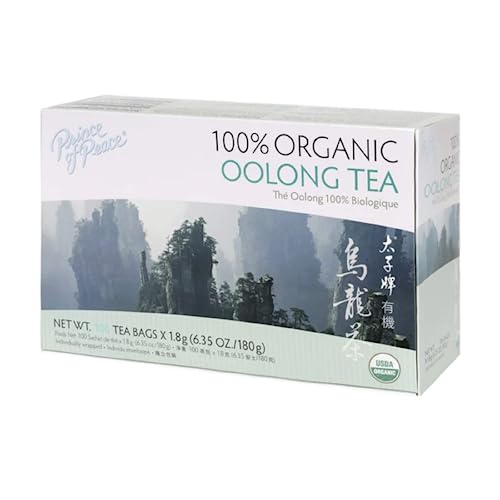
Have you ever wished for a magical elixir that could help you achieve your health and weight loss goals? Well, look no further because I have discovered the secret: oolong tea.
This remarkable beverage has been praised for its numerous benefits, and as a trim healthy mama, I can confidently say that oolong tea has become my ultimate go-to drink.
Why is oolong tea so special, you ask? Well, let me tell you. Not only does it support weight loss by boosting metabolism, but it also helps in balancing blood sugar levels and improving digestion. And that’s not all – oolong tea is packed with antioxidants that promote overall health and well-being. Plus, it enhances mental focus and alertness, making it the perfect companion for those busy days.
In this article, I will delve deeper into the wonders of oolong tea and how you can incorporate it into your trim healthy mama lifestyle. Get ready to discover the extraordinary benefits and delicious ways to enjoy this magical tea in your daily routine. Trust me, once you try oolong tea, you’ll wonder how you ever lived without it.
Key Takeaways
- Oolong tea provides an energy boost.
- Oolong tea contains antioxidants.
- Oolong tea offers a range of health benefits.
- Oolong tea reduces inflammation and fights free radicals.
Introduction to Oolong Tea and its Benefits
If you’re looking for a delicious and refreshing way to boost your health, oolong tea is the perfect choice for you! Oolong tea is a traditional Chinese tea that falls between the categories of black and green tea. It’s known for its unique taste and numerous health benefits.
Oolong tea is rich in antioxidants, which help to fight off free radicals in the body and protect against chronic diseases. It also contains caffeine, which can provide a gentle boost of energy without the jitters commonly associated with coffee.
When it comes to brewing techniques, oolong tea can be steeped in hot water for a few minutes, allowing the leaves to unfurl and release their flavors. There are various oolong tea varieties available, each with its own distinct taste and aroma.
Transitioning into the next section, oolong tea supports weight loss by boosting metabolism and reducing fat absorption.
How Oolong Tea Supports Weight Loss
Are you looking for a natural way to enhance your weight loss journey and boost your metabolism? Oolong tea may be just what you need! This incredible beverage not only tastes delicious, but it also offers numerous benefits for weight loss.
Here are a few ways that oolong tea supports weight loss:
- Oolong tea helps maintain hormonal balance, which is crucial for weight management.
- It contains antioxidants that can reduce inflammation in the body, making it easier to shed those extra pounds.
- The caffeine found in oolong tea can increase fat oxidation and boost metabolism.
- Oolong tea can also help control blood sugar levels and prevent cravings for unhealthy foods.
By incorporating oolong tea into your diet, you can enjoy these weight loss benefits and more.
In the next section, we’ll explore how oolong tea can help boost your metabolism.
Boosting Metabolism with Oolong Tea
Rev up your body’s calorie-burning engine by incorporating the powerful metabolism-boosting properties of oolong tea into your daily routine. Oolong tea contains compounds that can increase energy expenditure and fat oxidation, leading to weight loss. One study found that oolong tea can increase metabolism by up to 10%. In addition to boosting metabolism, oolong tea can also enhance energy levels, making it a great choice for those looking to stay active and burn more calories throughout the day. Furthermore, oolong tea has anti-inflammatory properties that can help reduce inflammation in the body. This is important because chronic inflammation has been linked to weight gain and obesity. By reducing inflammation, oolong tea can support a healthier weight. Transitioning into the next section, oolong tea is also beneficial for balancing blood sugar levels.
Balancing Blood Sugar Levels with Oolong Tea
Maintain stable blood sugar levels throughout the day by incorporating the balancing effects of oolong tea into your daily routine. Oolong tea has been shown to have a positive impact on blood sugar levels by balancing hormones and reducing inflammation.
Here are three ways oolong tea can help balance blood sugar levels:
-
Regulating insulin production: Oolong tea contains compounds that can help regulate insulin levels, preventing sudden spikes and crashes in blood sugar.
-
Enhancing insulin sensitivity: Oolong tea has been found to improve insulin sensitivity, allowing the body to use insulin more effectively and maintain stable blood sugar levels.
-
Reducing inflammation: Chronic inflammation can disrupt normal blood sugar regulation. Oolong tea’s anti-inflammatory properties can help reduce inflammation, promoting better blood sugar control.
By incorporating oolong tea into your daily routine, you can support balanced blood sugar levels and improve overall health. This sets the stage for the subsequent section on improving digestion and gut health.
Improving Digestion and Gut Health
Feast on fermented foods to foster a flourishing gut and enhance digestion.
Fermented foods such as sauerkraut, kimchi, and kefir are rich in beneficial bacteria that help heal a leaky gut and reduce inflammation. These probiotics promote the growth of good bacteria in the gut, improving digestion and nutrient absorption.
Additionally, fermented foods contain enzymes that aid in the breakdown of food, making it easier for the body to digest. By incorporating fermented foods into your diet, you provide your gut with the tools it needs to maintain a healthy balance and function optimally. This can contribute to overall gut health and improve digestion.
As we transition into the subsequent section about oolong tea as a source of antioxidants, it’s important to note that gut health plays a crucial role in our body’s ability to absorb and utilize these antioxidants effectively.
Oolong Tea as a Source of Antioxidants
To amplify the impact of antioxidants in your diet, consider incorporating oolong tea as a potent source of these essential compounds. Oolong tea is rich in polyphenols, which are powerful antioxidants that can help protect your cells from damage caused by harmful free radicals. These antioxidants have been shown to have a positive impact on heart health by reducing the risk of heart disease and lowering blood pressure. Additionally, oolong tea has been found to promote skin health by improving skin elasticity and reducing the appearance of wrinkles. It’s important to note that while oolong tea has many potential health benefits, it should be consumed in moderation as part of a balanced diet. Moving forward, let’s explore how oolong tea can enhance mental focus and alertness.
Enhancing Mental Focus and Alertness
Boost your cognitive abilities and stay sharp throughout the day with the incredible power of oolong tea. It can enhance mental focus and alertness in four ways:
-
Increased Brain Function: Oolong tea contains caffeine and L-theanine, which work together to improve brain function and promote mental clarity.
-
Enhanced Concentration: The combination of caffeine and antioxidants in oolong tea can help increase focus and concentration. This allows you to stay on task for longer periods.
-
Improved Memory: Studies have shown that oolong tea may have a positive effect on memory and learning abilities. It is a great choice for students and professionals alike.
-
Reduced Mental Fatigue: The energizing properties of oolong tea can combat mental fatigue and keep you alert and productive throughout the day.
Incorporating oolong tea into the trim healthy mama lifestyle provides a natural and effective way to boost mental performance.
Incorporating Oolong Tea into the Trim Healthy Mama Lifestyle
Infuse your lifestyle with the invigorating essence of this ancient elixir, allowing its vibrant notes to dance on your palate and elevate your journey as a Trim Healthy Mama. Incorporating oolong tea into your THM desserts can add a unique flavor profile and provide a natural energy boost.
Oolong tea contains caffeine, which can help improve focus and alertness, making it the perfect addition to your busy routine. Not only does oolong tea provide an energy boost, but it also contains antioxidants that support overall health and well-being.
By incorporating this delightful tea into your daily routine, you can enjoy its numerous benefits while staying on track with your Trim Healthy Mama lifestyle. Now, let’s explore some delicious ways to enjoy oolong tea in your daily routine, enhancing both your taste buds and your well-being.
Delicious Ways to Enjoy Oolong Tea in Your Daily Routine
Indulge your taste buds and elevate your daily routine with the delightful flavors of oolong tea, adding a unique twist to your beverages and desserts. Oolong tea isn’t just delicious, but it also offers a range of health benefits.
One way to enjoy this flavorful tea is by incorporating it into various recipes. You can use oolong tea as a base for refreshing iced teas or add it to smoothies for an extra boost of flavor. Additionally, oolong tea can be used in baking to infuse cakes, cookies, and muffins with its distinctive taste.
In addition to its culinary uses, oolong tea is also beneficial for skincare. The antioxidants found in oolong tea can help promote healthier skin by reducing inflammation and fighting free radicals. You can incorporate oolong tea into your skincare routine by using it as a facial toner or adding it to DIY face masks.
So, why not explore the world of oolong tea recipes and discover the wonders it can bring to your taste buds and skincare routine?
Frequently Asked Questions
Can oolong tea help with reducing stress and promoting relaxation?
Sure! Oolong tea can help improve sleep quality, which in turn reduces stress and promotes relaxation. It also has a positive impact on mental well-being by calming the mind and reducing anxiety.
Is oolong tea suitable for individuals with caffeine sensitivity?
Oolong tea may not be suitable for individuals with caffeine sensitivity. They can try oolong tea alternatives like herbal teas or caffeine-free teas, which still offer various health benefits without the stimulating effects of caffeine.
Does oolong tea have any potential side effects?
Oolong tea has no potential side effects when consumed in moderation. It is known for its health benefits, such as improving metabolism and aiding in weight loss.
Can oolong tea help with reducing cravings and controlling appetite?
Oolong tea can help reduce cravings and control appetite. Studies have shown that it can increase metabolism and decrease hunger levels, making it an effective tool for weight management.
Is there a recommended daily dosage of oolong tea for weight loss?
There is no specific recommended daily dosage of oolong tea for weight loss. However, studies suggest consuming 2-3 cups per day may be beneficial. It’s important to note that oolong tea may have potential side effects, such as caffeine sensitivity or digestive issues.
Conclusion
In conclusion, incorporating Oolong tea into the Trim Healthy Mama lifestyle can be a beneficial choice for weight loss and overall well-being. With its ability to boost metabolism and balance blood sugar levels, improve digestion, and enhance mental focus, Oolong tea offers a multitude of health benefits. Additionally, Oolong tea is rich in antioxidants, which can help protect against free radicals and promote a healthy immune system. Interestingly, studies have shown that Oolong tea can increase fat burning by up to 12%, making it a valuable addition to any weight loss journey. So why not sip on a cup of Oolong tea and enjoy its numerous advantages today?
Oolong Tea
What Part Of Tea Tree Plant Is Used For Oolong Tea
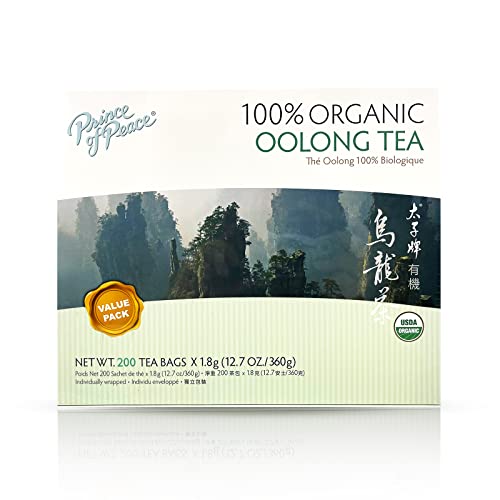
Have you ever wondered what part of the tea tree plant is used to make oolong tea? Well, let me take you on a journey through the fascinating world of this beloved tea.
Oolong tea, known for its unique flavor and aroma, is made from the leaves of the Camellia sinensis plant. These leaves undergo a special process that sets oolong tea apart from other varieties.
Imagine a tea farmer carefully handpicking the tender, young leaves from the plant. These leaves are then skillfully processed using traditional techniques, including withering, rolling, and oxidizing. The level of oxidation is key to determining the flavor profile of oolong tea, ranging from light and floral to rich and toasty.
As you delve deeper into the article, you will discover the health benefits of oolong tea, brewing tips to enhance your tea experience, and an exploration of the various oolong tea varieties.
So, sit back, relax, and join me on this enlightening journey into the world of oolong tea.
Key Takeaways
- Oolong tea is made from the leaves of the Camellia sinensis plant.
- The leaves used for oolong tea are mature leaves and buds.
- Tea tree oil is not derived from the leaves used for oolong tea.
- Oolong tea combines the freshness of green tea with the richness of black tea.
Introduction to Oolong Tea
Oolong tea combines the freshness of green tea with the richness of black tea. It is a traditional Chinese tea that falls between green and black teas in terms of oxidation levels.
Oolong tea has a long and fascinating history that dates back over 400 years. Legend has it that oolong tea was discovered by a tea farmer who forgot about his tea leaves and they oxidized more than usual, resulting in a unique flavor. Since then, oolong tea has become highly prized for its complex taste and health benefits.
It is known for its floral and fruity flavors, as well as its smooth and mellow texture. Now, let’s explore the tea leaves used for oolong tea.
The Tea Leaves Used for Oolong Tea
The leaves that go into making this unique and flavorful tea are carefully selected and processed. Oolong tea is made from the Camellia sinensis plant, just like black and green tea. However, oolong tea is distinct in its taste and aroma due to the specific leaves used.
Oolong tea is made from mature leaves and buds, which are plucked from the tea tree. These leaves are then withered under the sun to reduce moisture content. After withering, the leaves are lightly oxidized, which gives oolong tea its characteristic flavor profile. The oxidation process is crucial in developing the complex flavors and aromas of oolong tea.
It is interesting to note that tea tree oil, known for its medicinal properties, is not derived from the leaves used for oolong tea. Instead, it is extracted from the leaves of a different plant species.
Now, let’s explore the fascinating harvesting methods for oolong tea.
Harvesting Methods for Oolong Tea
Imagine you’re standing in a lush tea garden, surrounded by skilled farmers who expertly pluck the most exquisite leaves and buds, like delicate treasures, to create the captivating oolong brew. Harvesting methods for oolong tea play a crucial role in ensuring the quality and taste of this beloved beverage. There are two primary methods employed: hand picking and machine harvesting. Hand picking involves carefully selecting the young leaves and buds by hand, ensuring only the finest and freshest ones are chosen. This meticulous process requires skilled hands and a deep understanding of the tea plant. On the other hand, machine harvesting involves the use of specialized equipment that mechanically harvests the leaves. While this method is more efficient, it may not achieve the same level of precision as hand picking. The chosen method greatly impacts the flavor profile and overall quality of the oolong tea produced. Transitioning into the subsequent section about ‘processing techniques for oolong tea,’ the harvested leaves undergo a series of intricate steps to bring out their unique characteristics.
Processing Techniques for Oolong Tea
Step into the world of oolong tea processing and discover the artistry behind crafting its distinctive flavors and aromas.
In the process of creating oolong tea, the fermentation process plays a significant role. After the leaves are harvested, they undergo a controlled fermentation process that brings out the unique characteristics of oolong tea. This fermentation process allows the tea leaves to develop complex flavors and aromas, giving oolong tea its rich and nuanced taste.
Another crucial aspect of oolong tea processing is the roasting technique. This step involves carefully roasting the fermented tea leaves to enhance their flavors and create a balanced and aromatic profile. Roasting helps to remove any residual moisture from the leaves and adds a subtle smokiness to the tea. It also helps to seal in the flavors and aromas, ensuring a delightful cup of oolong tea.
As we delve into the subsequent section about oxidation levels in oolong tea, we’ll explore how this process further contributes to the unique qualities of this beloved beverage.
Oxidation Levels in Oolong Tea
Explore the varying degrees of oxidation in oolong tea, allowing you to appreciate the intricate balance of flavors and aromas that each level brings to your cup.
-
Delicate oxidation: This light oxidation level preserves the tea’s fresh, floral notes, giving it a refreshing and subtle taste that dances on your palate.
-
Moderate oxidation: With a deeper oxidation level, oolong tea develops a richer flavor profile, showcasing notes of fruit, honey, and roasted nuts. The complexity of this tea keeps your taste buds engaged with each sip.
-
Heavy oxidation: This intense oxidation level produces a robust and bold oolong tea, characterized by deep, earthy flavors and a smooth finish. It offers a satisfying depth that lingers on your tongue, leaving you craving for more.
Understanding the oxidation levels in oolong tea sets the stage for exploring the unique flavor profiles that each step brings to your cup, creating a truly enriching tea experience.
Now, let’s delve into the fascinating world of oolong tea flavors.
Flavor Profiles of Oolong Tea
Get ready to embark on a tantalizing journey as your taste buds are transported to a world of enticing flavor profiles found in the captivating realm of oolong tea. Oolong tea offers a wide range of flavor profiles, making it a beloved choice among tea connoisseurs.
From floral and fruity notes to woody and nutty undertones, oolong tea has something to offer for every palate. The flavor profiles of oolong tea can vary depending on factors such as the oxidation level, growing region, and brewing techniques.
By adjusting the brewing time and water temperature, you can bring out different flavors and aromas in your oolong tea. Whether you prefer a light and delicate brew or a rich and robust infusion, oolong tea has the versatility to cater to your taste preferences.
As we explore the health benefits of oolong tea, you will discover how this exquisite beverage can nourish both your body and soul.
The Health Benefits of Oolong Tea
Indulge in the delightful and invigorating benefits of oolong tea as it tantalizes your taste buds and nourishes your body and soul. Here are four fascinating facts about oolong tea that’ll capture your attention:
-
The history of oolong tea dates back to ancient China, where it was enjoyed by emperors and scholars for its exquisite taste and health benefits.
-
Oolong tea falls between black and green tea in terms of caffeine content. It provides a gentle energy boost without the jitters often associated with coffee.
-
Oolong tea is rich in antioxidants that help combat free radicals and promote overall well-being.
-
Studies suggest that oolong tea may aid in weight management by boosting metabolism and reducing fat absorption.
Now, let’s delve into the art of brewing oolong tea and discover the secrets to making the perfect cup.
Brewing Tips for Oolong Tea
Now that we’ve explored the health benefits of oolong tea, let’s dive into some brewing tips to ensure you get the most out of your tea experience.
The brewing temperature for oolong tea is crucial, as it can greatly affect the flavor profile. Generally, oolong tea is best brewed at a temperature between 190-205°F (88-96°C). This allows the leaves to unfurl and release their unique flavors without scalding them.
As for steeping time, it varies depending on the type of oolong tea you have. Lighter oolong teas may require a shorter steeping time of around 2-3 minutes, while darker oolong teas can be steeped for 4-5 minutes. Remember to experiment and adjust the brewing parameters to suit your taste preferences.
By carefully controlling the temperature and steeping time, you can unlock the full potential of your oolong tea.
So, let’s move on to exploring different varieties of oolong tea.
Exploring Different Varieties of Oolong Tea
Take a journey through the diverse world of oolong tea and discover a multitude of flavors and aromas that will transport your taste buds to paradise.
When exploring different varieties of oolong tea, it’s fascinating to delve into the tea plantations where these exceptional teas are grown. Oolong tea is meticulously crafted through a complex production process that requires careful attention to detail.
From plucking the tender tea leaves to withering, rolling, and oxidizing, each step contributes to the unique characteristics of oolong tea. The level of oxidation can vary, resulting in a wide range of flavors, from light and floral to rich and robust.
By exploring the various tea plantations and understanding the oolong tea production process, you can truly appreciate the artistry and skill that goes into creating this extraordinary beverage.
Frequently Asked Questions
How long does it take for the tea leaves to oxidize during the processing of oolong tea?
During the processing of oolong tea, the tea leaves typically oxidize for around 60-75 minutes. Oolong tea is best brewed using loose tea leaves to allow for proper infusion and release of flavors. Using a regular tea bag may not provide the same quality and taste.
What are the different types of harvesting methods used for oolong tea production?
There are three common harvesting methods for oolong tea: hand plucking, machine harvesting, and combination harvesting. Hand plucking is the most common and labor-intensive method, ensuring the highest quality leaves. Oolong tea offers numerous health benefits, including improved digestion and heart health.
Can oolong tea be brewed using a regular tea bag or is it necessary to use loose tea leaves?
Oolong tea can be brewed using either a regular tea bag or loose tea leaves. While tea bags are more convenient, loose tea leaves offer a richer and more flavorful experience.
Are there any specific health benefits of oolong tea for weight loss?
Oolong tea has specific health benefits for weight loss. Its metabolism-boosting properties and ability to regulate blood sugar levels can aid in shedding pounds. Incorporating oolong tea into a balanced diet can support your weight loss journey.
Are there any specific brewing techniques or equipment that should be used for different varieties of oolong tea?
To properly brew different varieties of oolong tea, it is important to consider the specific brewing techniques and equipment used. These factors play a crucial role in achieving the perfect balance of flavors and extracting the tea’s unique characteristics.
Conclusion
In conclusion, oolong tea is a fascinating beverage that offers a multitude of flavors and health benefits. One interesting statistic that may surprise you is that oolong tea has been found to help boost metabolism and aid in weight loss. Studies have shown that regularly consuming oolong tea can increase fat burning by up to 10%.
This impressive statistic showcases the potential of oolong tea as a natural and effective tool for those looking to maintain a healthy weight. So why not indulge in a cup of oolong tea and experience its wonders for yourself?
Oolong Tea
What Is Oolong Milk Tea Made Of

As a tea enthusiast and self-proclaimed connoisseur, I find great pleasure in exploring the world of unique and flavorful beverages. Among my vast collection of tea experiences, one particular blend stands out for its exquisite taste and creamy texture: oolong milk tea.
This delightful concoction combines the rich, malty notes of oolong tea with the velvety smoothness of milk, creating a harmonious fusion of flavors. But what exactly goes into this tantalizing beverage?
Allow me to take you on a journey through the intricate composition of oolong milk tea, unraveling its secrets and shedding light on the precise techniques used to craft this culinary masterpiece.
From the selection of the finest oolong tea leaves to the artful addition of sweeteners and toppings, we will delve into the realm of tea expertise, exploring the nuances and complexities that make oolong milk tea a true delight for the senses.
So sit back, relax, and prepare to immerse yourself in the world of oolong milk tea.
Key Takeaways
- Oolong milk tea is made from oolong tea leaves that undergo a unique fermentation process, resulting in a distinct flavor profile with floral and fruity notes.
- Condensed milk can be substituted with alternatives like almond milk or coconut milk to achieve similar richness and customize the taste of oolong milk tea.
- Customization options for oolong milk tea include adjusting the sweetness level by varying the amount of sugar or sweetener used and exploring different tea blends to enhance the flavor profile.
- Brewing techniques such as using optimal brewing temperature and steeping time help to extract flavors without bitterness and create the perfect cup of oolong milk tea.
Oolong Tea: The Base Ingredient
If you’re curious about what goes into making a delicious oolong milk tea, you’ll be glad to know that the base ingredient is none other than oolong tea itself!
Oolong tea is a type of tea that falls between green tea and black tea in terms of oxidation. It is known for its unique flavors and health benefits. There are several different types of oolong tea, including Tie Guan Yin, Da Hong Pao, and Oriental Beauty, each with its own distinctive characteristics.
The tea leaves used in oolong milk tea are carefully selected and processed to achieve the desired flavor profile. The fermentation process plays a crucial role in enhancing the flavors of oolong tea.
Adding milk to oolong tea not only adds creaminess but also brings depth of flavor.
The next section will explore how milk complements the oolong tea to create a delightful beverage.
Milk: Adding Creaminess and Depth of Flavor
To enhance the richness of your oolong milk tea, whisk in a velvety drizzle of creamy goodness, like a gentle breeze carrying whispers of indulgence. Adding milk alternatives can elevate the flavor and provide a unique twist to this classic beverage. Experimenting with different milk ratios allows for a customizable experience, tailoring the creaminess to your preference.
Consider options such as almond milk, coconut milk, or oat milk, each adding their own distinct flavors and textures. These milk alternatives offer a delightful contrast to the robust and earthy notes of oolong tea, creating a harmonious balance of tastes. The choice of milk also impacts the overall mouthfeel and creaminess of the tea, allowing for a truly personalized beverage. By exploring different milk alternatives and ratios, you can unlock a world of flavor possibilities in your oolong milk tea.
Now, let’s delve into the next aspect of crafting the perfect oolong milk tea: sweeteners for balancing the taste.
Sweeteners: Balancing the Taste
Indulge your taste buds with the perfect balance of sweetness in your oolong milk tea, as you explore the world of enticing sweeteners.
When it comes to sweetening oolong milk tea, you have the choice between natural and artificial sweeteners. Natural sweeteners like honey or agave syrup can enhance the flavor profile with their distinct taste, while artificial sweeteners provide a calorie-free option.
Finding the right balance of sweetness is crucial in oolong milk tea, as it can enhance the overall taste experience without overpowering the delicate flavor of the tea leaves. The sweetness should complement the tea’s natural notes, creating a harmonious blend of flavors.
It is important to experiment and adjust the sweetness according to personal preference.
As we move on to the next section about tapioca pearls, we will explore how they add texture and chewiness to this delightful beverage.
Tapioca Pearls: Adding Texture and Chewiness
Tapioca pearls are the perfect addition to add a delightful texture and chewiness to your oolong milk tea. These small, translucent balls are made from cassava starch and are typically boiled until they become soft and chewy. Tapioca pearls are commonly used in bubble tea, but they can also be found in oolong milk tea. However, if you’re looking for alternatives to tapioca pearls, you can try using other ingredients such as aloe vera cubes or fruit jellies. It’s important to note that while tapioca pearls can add a fun and unique texture to your drink, they are not known for their health benefits. They are primarily a source of carbohydrates and do not offer significant nutritional value. With the addition of tapioca pearls or other alternatives, oolong milk tea becomes a more enjoyable and satisfying beverage.
Now, let’s talk about the next ingredient that adds to the refreshing and cooling effect of oolong milk tea: ice.
Ice: Creating a Refreshing and Cooling Effect
Imagine taking a sip of your favorite beverage, feeling the cool and refreshing sensation of ice dancing on your taste buds. In oolong milk tea, ice plays a crucial role in creating a thirst-quenching beverage.
Oolong milk tea is made by combining oolong tea leaves with milk and other ingredients. The specific oolong tea leaves used in oolong milk tea contribute to its characteristic flavors and add a hint of fruitiness. The tea leaves undergo a fermentation process, which enhances their taste profile and creates a unique flavor.
When ice is added to the tea, it not only cools the beverage but also dilutes the flavors slightly, allowing the drinker to fully appreciate the delicate nuances of the oolong tea. This combination of flavors and the cooling effect of ice make oolong milk tea a truly refreshing beverage.
Moving on to the next section about flavorings: enhancing the taste profile…
Flavorings: Enhancing the Taste Profile
To truly elevate the taste profile, flavorings are added to the oolong milk tea, creating a sensory symphony that tantalizes the taste buds.
Oolong milk tea starts with high-quality oolong tea leaves, carefully selected for their unique flavors and aromas. These leaves undergo a meticulous fermentation process, which enhances their taste and creates a complex profile.
The addition of milk further enriches the flavor, adding creamy and smooth notes to the tea. Other ingredients, such as sweeteners or fruit extracts, can be incorporated to enhance specific flavors or add a hint of sweetness.
The combination of the oolong tea leaves, milk, and other flavorings results in a harmonious blend that appeals to a wide range of palates. The flavors work together to create a balanced and enjoyable beverage.
Moving on to the next section, boba is a popular addition for extra texture…
Boba: A Popular Addition for Extra Texture
If you’re looking to elevate your oolong milk tea experience, boba is the perfect addition for an extra burst of texture and fun.
Boba, also known as tapioca pearls, have become increasingly popular in recent years and have become a staple in many bubble tea shops. These chewy and gelatinous balls are made from tapioca starch and are typically cooked in a sweet syrup to give them a hint of sweetness.
When added to oolong milk tea, they provide a delightful contrast to the smooth and creamy texture of the beverage.
Additionally, boba trends have evolved to include a wide variety of alternative toppings such as fruit jellies, popping boba, and even cheese foam. These toppings offer unique flavors and textures that can further enhance the overall drinking experience.
Moving on to the next section, condensed milk: a traditional ingredient for richness…
Condensed Milk: A Traditional Ingredient for Richness
Savor the sweetness and silky smoothness that condensed milk brings to your cup of tradition. Oolong milk tea is a traditional milk tea variation that combines the rich flavors of oolong tea leaves with the indulgent creaminess of condensed milk.
To create this exquisite beverage, high-quality oolong tea leaves are carefully selected and harvested, typically from Taiwan or China. These tea leaves undergo a unique fermentation process that imparts a distinct flavor profile characterized by floral and fruity notes. The brewed tea is then combined with condensed milk, which adds a luscious sweetness and creamy texture.
For those seeking alternatives to condensed milk, options like almond milk or coconut milk can be used to achieve a similar richness. Other additions, such as boba pearls or flavored syrups, can further customize your oolong milk tea experience.
Transitioning into the next section, these additions allow you to personalize your oolong milk tea to your own taste preferences.
Other Additions: Customizing Your Oolong Milk Tea
As a food and beverage scientist specializing in tea, I’m excited to delve into the intricacies of oolong milk tea. While condensed milk provides richness to this delightful beverage, there are other additions that can truly customize your oolong milk tea experience.
One such aspect is sweetness. By adjusting the amount of sugar or sweetener added, you can personalize the sweetness level to suit your taste preferences.
Additionally, exploring different tea blends can further enhance the flavor profile of your oolong milk tea. Oolong tea leaves, with their unique semi-oxidized fermentation process, contribute a delicate and complex flavor to the beverage. They can range from floral and fruity to toasty and woody, offering a wide range of options for tea enthusiasts.
Now, let’s move on to the next section where we’ll explore brewing techniques and discover tips for making the perfect cup of oolong milk tea.
Brewing Techniques: Tips for Making the Perfect Cup
Let’s dive into the art of brewing and uncover some tips for crafting the ultimate cup of oolong milk tea. To achieve the perfect cup, it’s important to pay attention to the brewing temperature and steeping time. Here are four essential tips to consider:
-
Optimal Brewing Temperature: Oolong tea is best brewed at a temperature between 180°F (82°C) and 190°F (88°C). This temperature range allows the delicate flavors of the tea leaves to be extracted without becoming bitter.
-
Steeping Time: The ideal steeping time for oolong milk tea is around 3-5 minutes. Longer steeping can lead to a stronger and more robust flavor, while shorter steeping may result in a milder taste.
-
Experiment with Water Quality: Using filtered or spring water can enhance the taste of your oolong milk tea. Avoid using distilled water, as it lacks the mineral content that contributes to the tea’s flavor.
-
Adjust to Personal Preference: Feel free to adjust the brewing temperature and steeping time to suit your taste preferences. Remember that oolong milk tea is a versatile beverage, and you can customize it to your liking.
By following these brewing techniques, you can enjoy a perfectly brewed cup of oolong milk tea with its unique flavor profile and creamy texture.
Frequently Asked Questions
How does oolong tea compare to other types of tea in terms of flavor and caffeine content?
In terms of flavor, oolong tea offers a unique and complex taste profile compared to other teas. It has a smooth, floral, and slightly fruity flavor. In terms of caffeine content, oolong tea falls between green and black tea.
Can I use any type of milk in oolong milk tea, or is there a specific type that works best?
Different types of milk can be used in oolong milk tea, but the best alternatives to traditional sugar are non-dairy options like almond or oat milk. These provide a creamy texture and complement the unique flavors of oolong tea.
Are there any alternative sweeteners I can use in oolong milk tea instead of traditional sugar?
Alternative sweeteners for oolong milk tea include honey, stevia, or agave syrup. These options can provide a different flavor profile while still adding sweetness. Oolong milk tea offers health benefits such as improved digestion and increased metabolism.
What are some common flavorings that can be added to oolong milk tea to create different taste profiles?
Flavoring options for oolong milk tea include additions like honey, vanilla, or fruit syrups. Different types of milk, such as almond milk or coconut milk, can also be used to create unique taste profiles.
Can I make oolong milk tea without using tapioca pearls or boba? What are some other options for adding texture to the drink?
To make oolong milk tea without tapioca pearls or boba, there are alternative milk options such as almond or coconut milk. Creative toppings like jelly cubes or fruit slices can be added for texture.
Conclusion
Oolong milk tea is made by carefully combining the rich and complex flavors of oolong tea with the creaminess of milk. The specific oolong tea leaves used and their fermentation process are important factors in creating the unique taste profile of this drink. Sweeteners, tapioca pearls, and condensed milk are added to further enhance the richness and texture. Understanding the composition and manufacturing process of oolong milk tea allows one to appreciate the artistry behind this delightful beverage.
-

 Tea and Philosophy3 months ago
Tea and Philosophy3 months agoLinkBoss Revolutionizes Interlinking Strategy for WordPress Sites
-

 Rooibos Tea3 months ago
Rooibos Tea3 months agoRooibos Where It Comes From
-
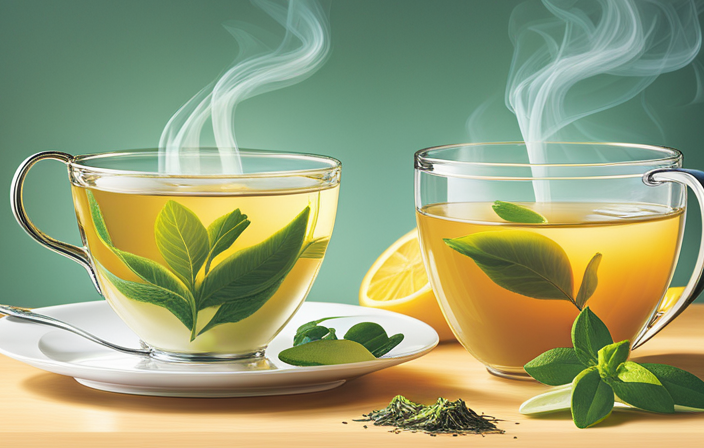
 Green Tea3 months ago
Green Tea3 months agoWhat Factors Contribute to the Sometimes Bitter Taste of Green Tea?
-

 Rooibos Tea3 months ago
Rooibos Tea3 months agoWhere Does Rooibos Come From?
-

 Rooibos Tea3 months ago
Rooibos Tea3 months agoIs Rooibos Teas Good For When You’re On Your Period
-
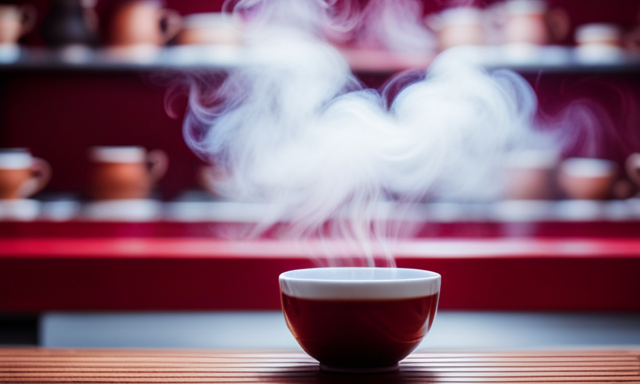
 Rooibos Tea3 months ago
Rooibos Tea3 months agoHow Many Times A Day Can You Drink Rooibos Tea
-
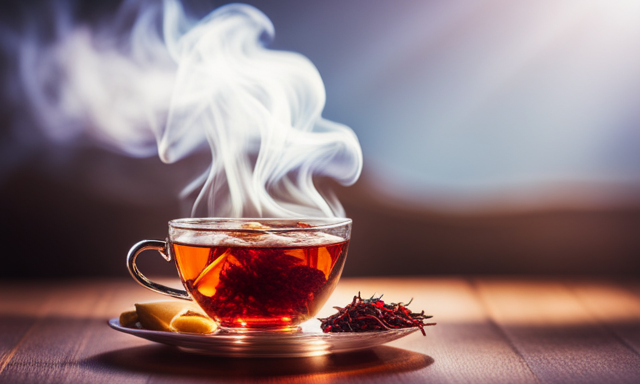
 Rooibos Tea3 months ago
Rooibos Tea3 months agoWhat Are Rooibos Tea Benefits
-
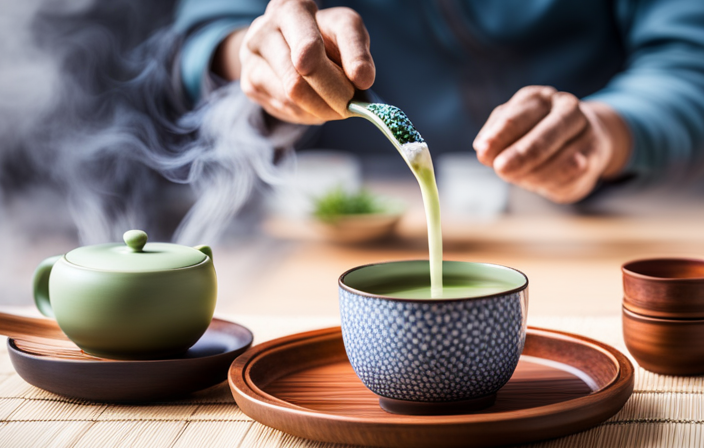
 Green Tea3 months ago
Green Tea3 months agoHow Can You Prepare the Perfect Cup of Green Tea?
